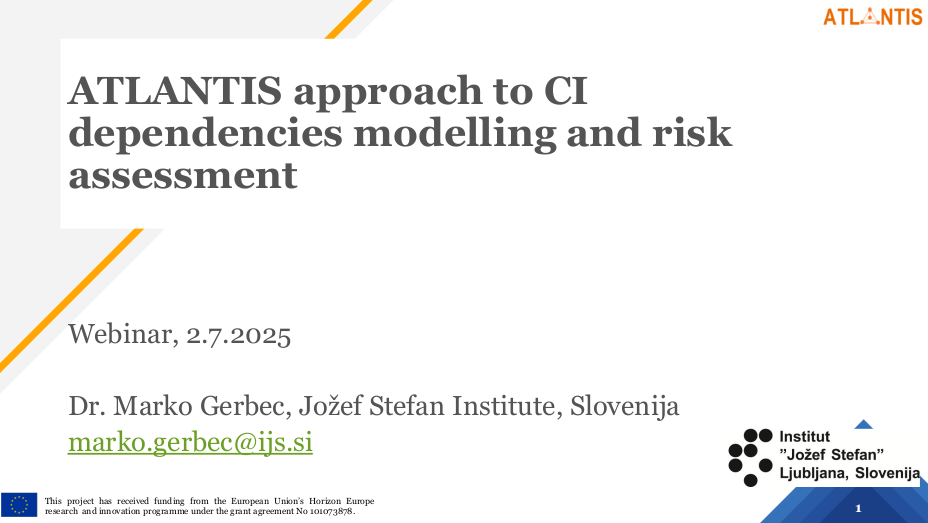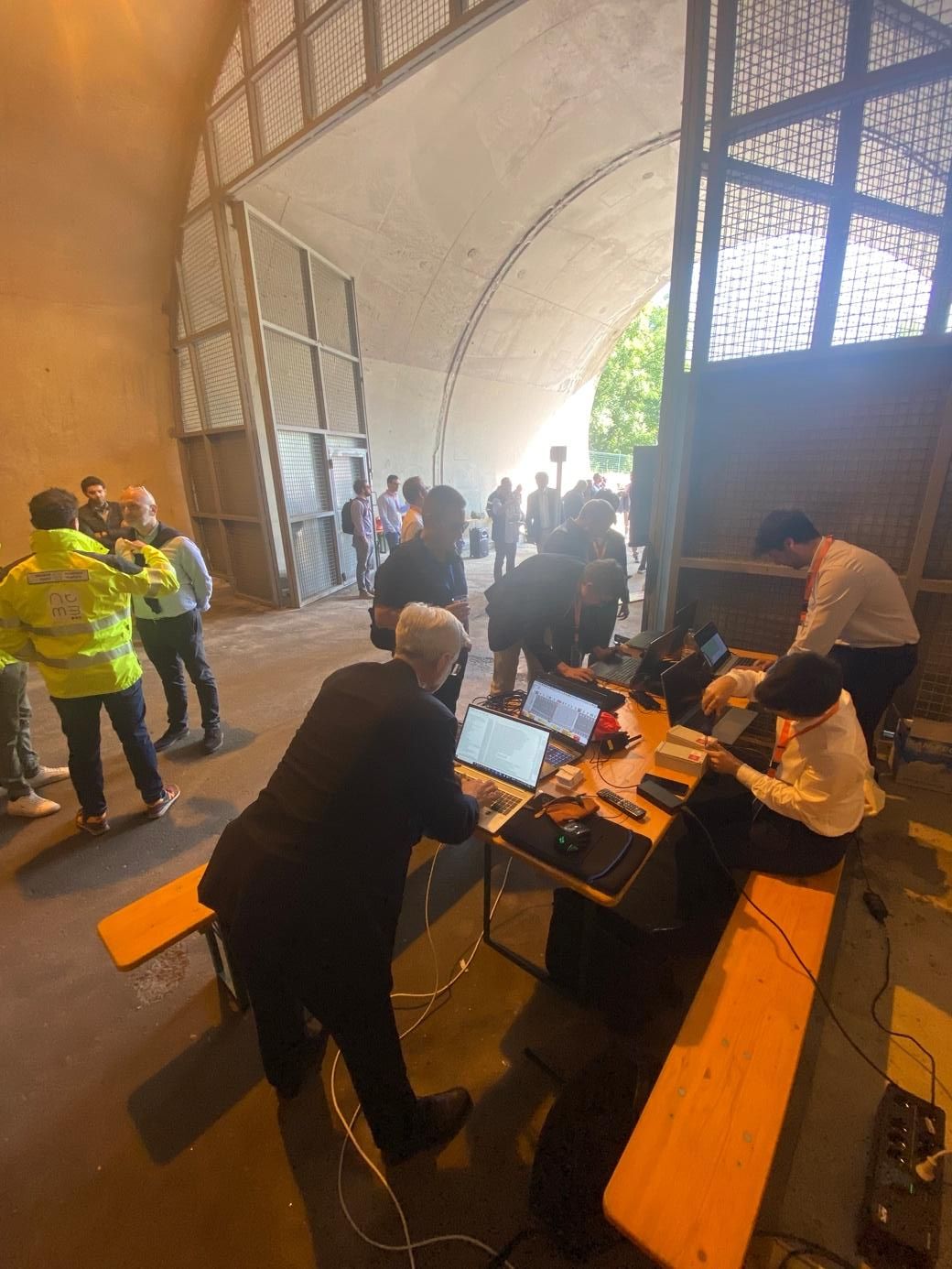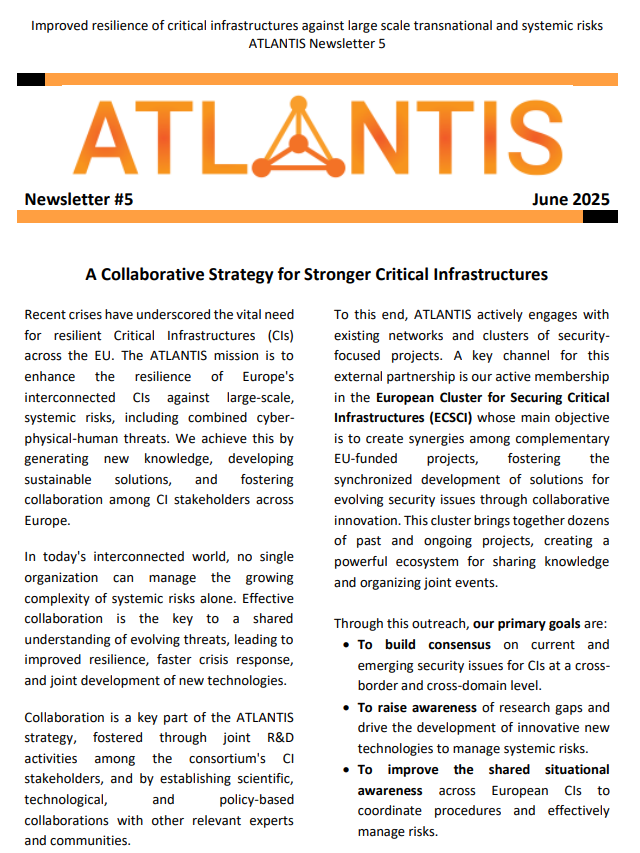In an age where connectivity defines progress, Europe’s critical infrastructures stand as pillars of societal well-being and economic prosperity. However, as systems grow more interconnected, the risks expand from local to systemic. These risks don’t respect borders, which is why a holistic approach like ATLANTIS can be a game-changer.
Proactive Risk Management
ATLANTIS integrates advanced algorithms and real-time analytics into operational workflows, elevating risk management to an integrated part of operations. By making data-driven and real-time decisions, it helps safeguard European infrastructures against not only immediate threats but systemic risks that have far-reaching implications.
The ATLANTIS framework isn’t merely reactive; it’s designed for proactive risk management. Feedback loops enable constant fine-tuning of strategies, making the system adaptable to changing risk landscapes.
Transparency in Decision-Making
ATLANTIS leverages Explainable AI to transform intricate data into understandable and actionable insights, enhancing both immediate and long-term decision-making processes.
Reputation and Trust
Trust is an invaluable asset, especially when the stakes are high. ATLANTIS serves to reinforce the reputation of key infrastructural entities, establishing them as reliable caretakers of public safety and service continuity.
A Unified European Approach
This is not just about isolated national efforts. ATLANTIS offers a harmonized method to defend against systemic risks across European infrastructures, irrespective of the domain or geographical location.
In Summary
The ATLANTIS initiative is an essential component for strengthening European infrastructures against complex, systemic risks. With its intelligent integration of cutting-edge technologies and data analysis, it redefines the standard for modern risk management.
Feel free to reach out and learn how to become part of this exciting initiative that aims for a safer, more resilient Europe.





